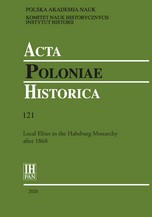A DIRTY WAR: THE ARMED POLISH-LITHUANIAN CONFLICT AND ITS IMPACT ON NATION-MAKING IN LITHUANIA, 1919–23
A DIRTY WAR: THE ARMED POLISH-LITHUANIAN CONFLICT AND ITS IMPACT ON NATION-MAKING IN LITHUANIA, 1919–23
Author(s): Tomas BalkelisSubject(s): Military history, Studies in violence and power, Pre-WW I & WW I (1900 -1919), Interwar Period (1920 - 1939), Inter-Ethnic Relations, Peace and Conflict Studies
Published by: Instytut Historii im. Tadeusza Manteuffla Polskiej Akademii Nauk
Keywords: Polish-Lithuanian War; Soviet-Polish War; violence; paramilitarism; ethnic conflict; nation-making;
Summary/Abstract: This article discusses the armed Polish-Lithuanian conflict during 1919–23. It flared in May 1919 when the first open clash between Lithuanian and Polish troops took place. It gradually escalated into an undeclared war and lasted until late November 1920 when, in Kaunas, both sides agreed to stop fighting along the neutral zone established by the League of Nations. However, there was no final peace agreement signed, only a truce, and low-scale paramilitary violence continued unabated in the neutral zone until as late as May 1923. The author argues that the conflict involved various paramilitary formations which terrorised the civilians in the disputed borderland. For the Lithuanian government, the war against Poland provided an opportunity for total mobilization of the Lithuanian society. The fact that, during the entire interwar period, the conflict remained open-ended, ensured that the paramilitary structures and military laws that emerged during it would remain in place for much longer.
Journal: Acta Poloniae Historica
- Issue Year: 2020
- Issue No: 121
- Page Range: 227-259
- Page Count: 33
- Language: English

